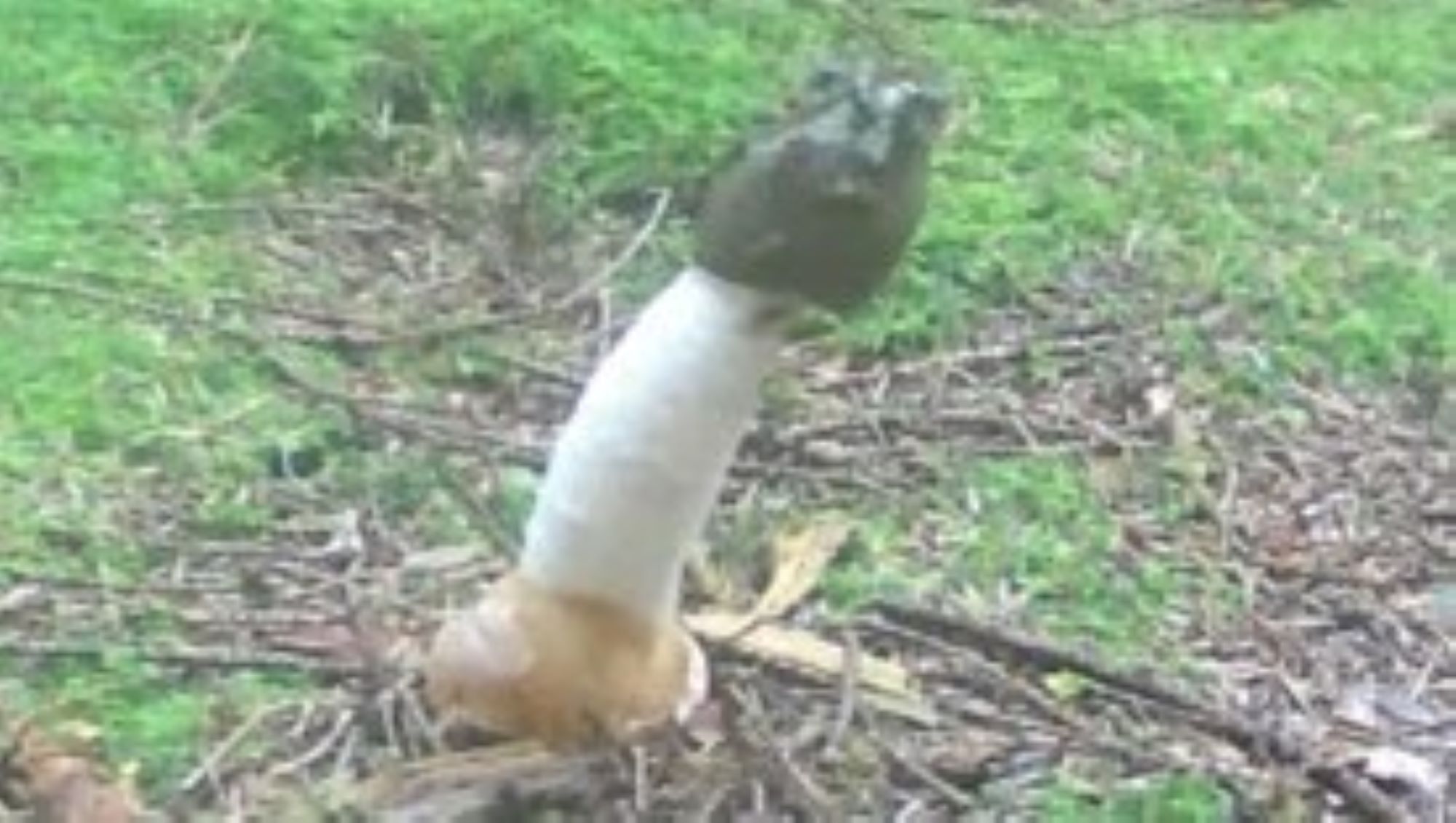Watch slime-covered penis mushroom that smells like rotting flesh grow and decay in mesmerizing time-lapse
A video of a stinkhorn fungus — a 10-inch penis-shaped mushroom — bursting from the ground, growing and decaying has been captured in a forest in Germany.
Scientists have captured a bewitching new time-lapse showing the birth and decay of a penis-shaped mushroom infamous for its foul smell.
The mushroom is the visible part of a stinkhorn fungus (Phallus impudicus), which commonly grows near rotting wood and plants and can reach up to 10 inches (25 centimeters) above the ground. The stem is topped by a bell-shaped cap covered in olive-brown slime, known as the gleba, which gives the mushroom its unmistakable stench.
"The smell of stinkhorns has been described as similar to decomposing flesh, rotting feces, and sewage," the University of Florida said on its website. Despite their unappetizing odor, stinkhorns are edible. "The flavor of Phallus impudicus, known as the common stinkhorn, is reported to resemble hazelnuts when eaten in its egg state," the website said.
Stinkhorns emerge from a small, egg-shaped base that is buried in the soil and tethered to the ground with white filaments. This base contains a blob of slime and spores that eventually becomes the mushroom's stinky cap.
Related: Horrifying photo captures moment parasitic fungus bursts from huge spider's body
In the new video, scientists captured the moment a stinkhorn emerged from its base and grew to its full size within three hours.
"What you see in our video is the short lifetime of the stinkhorn's fruiting body," the Regionalforstamt Soest-Sauerland, the government forestry office for the Soest-Sauerland region of eastern Germany, said in a translated Facebook post. "It took three weeks to shoot this video. Nothing happened for the first two weeks, we had to wait and keep checking the camera until we finally obtained this footage."
Get the world’s most fascinating discoveries delivered straight to your inbox.
Flies swarmed around the mushroom's gleba as soon as it formed, the post said, drawn by the putrid smell. They feasted on the slime for 10 hours, stripping the mushroom of its olive-brown cover. In the following few days, the remaining white body, known as a "corpse finger," can be seen beginning to rot before slowly toppling over. The footage then shows the fruiting body as it decomposes and disappears back into the ground.
This short life is enough time for stinkhorns to complete their reproductive cycle. The mushrooms' sticky cap is loaded with spores, which flies and other invertebrates ingest as they dine on the slime and scatter in new locations via their excrement, according to the University of Florida.
This strategy is different from most mushroom-forming fungi, which disperse their spores by releasing them into the wind, and it explains the mushroom's offensive smell, the website noted.

Sascha is a U.K.-based staff writer at Live Science. She holds a bachelor’s degree in biology from the University of Southampton in England and a master’s degree in science communication from Imperial College London. Her work has appeared in The Guardian and the health website Zoe. Besides writing, she enjoys playing tennis, bread-making and browsing second-hand shops for hidden gems.
 Live Science Plus
Live Science Plus






